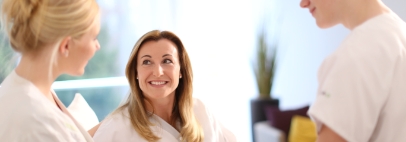Monday to Friday 8.00 am to 5.00 pm
Cause of uncontrolled urine loss
Most women affected, around 50%, suffer from stress incontinence, but overactive bladder also affects quality of life, as do the mixed forms of the two types. It is important to differentiate between the various forms, as their treatment differs. The following symptoms may occur:
- in the case of stress incontinence: loss of urine when straining, such as coughing, sneezing, lifting weights, walking or standing up
- with an overactive bladder: strong, unsuppressible urge to urinate, sometimes with involuntary, sudden, uncontrollable loss of urine, strong urge to urinate, so that you have to get up several times at night to empty your bladder


.jpg)

